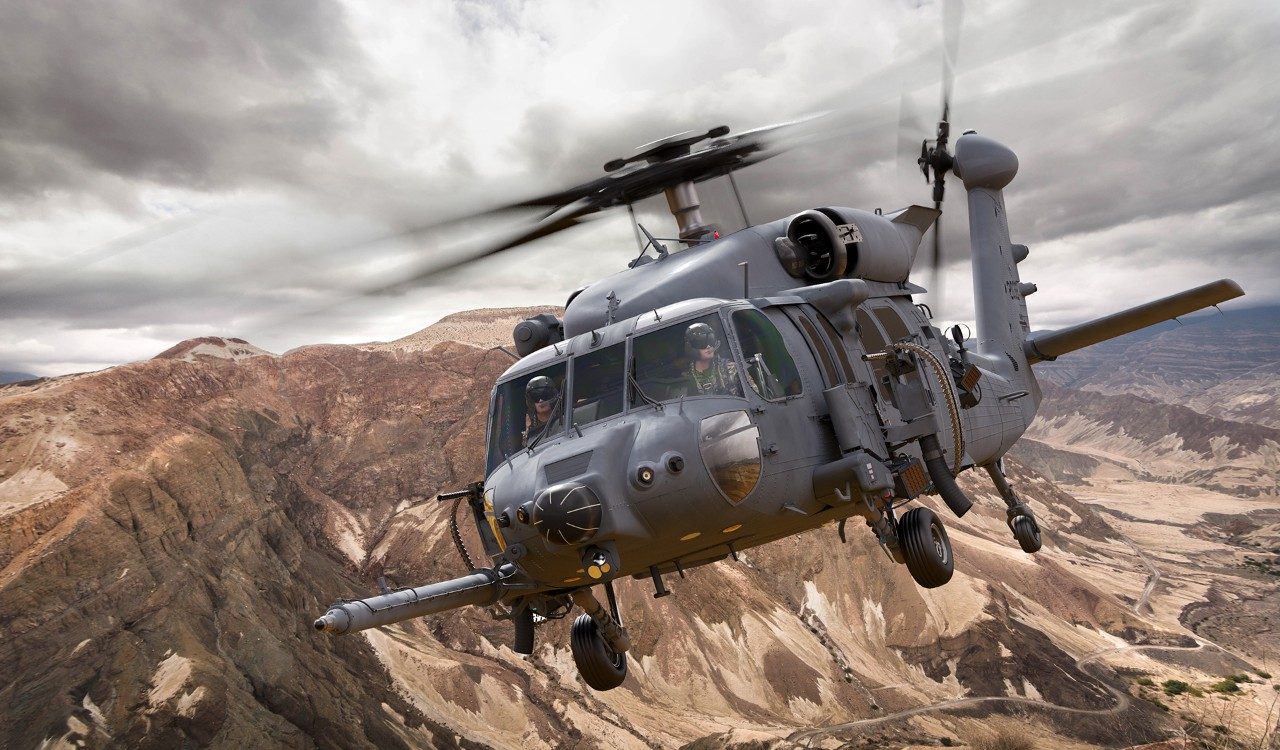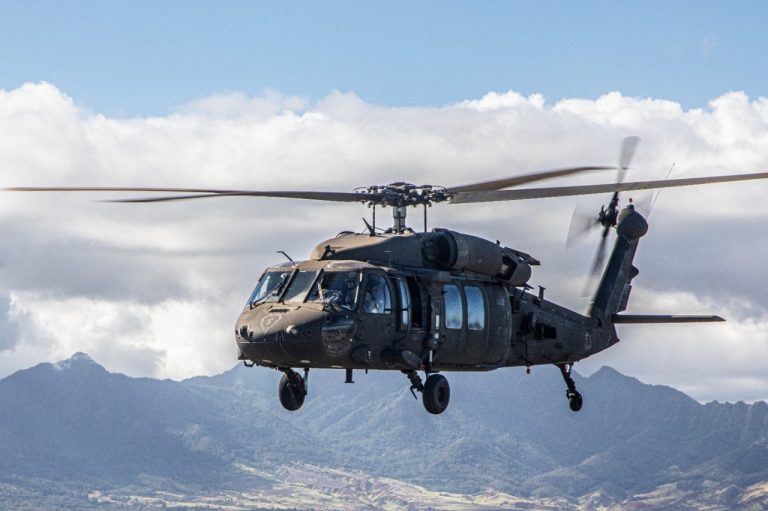Upkeep and Upkeep for UH 60 Helicopters
Upkeep and Upkeep for UH 60 Helicopters
Blog Article
Exploring the Ingenious Innovation Behind Airplane Layout and Engineering
The field of aircraft style and engineering is experiencing a transformative change driven by cutting-edge technologies that enhance performance, performance, and sustainability. Advanced products such as carbon fiber composites and titanium alloys are setting new standards, while aerodynamic innovations and expert system are streamlining procedures and improving end results. As the sector comes to grips with the difficulties of environmental responsibility, developments in sustainable aeronautics innovations guarantee to reshape the future. Nonetheless, the effects of these innovations prolong past performance metrics; they might redefine the actual nature of air traveling. What might this suggest for the sector as a whole?
Advanced Materials in Airplane Style
Exactly how can the integration of innovative products transform aircraft layout? The unification of innovative materials, such as carbon fiber composites, titanium alloys, and progressed ceramics, plays an essential role in improving airplane performance and effectiveness. These products offer remarkable strength-to-weight ratios, making it possible for producers to decrease total airplane weight without endangering structural stability. This decrease in weight straight adds to boosted gas performance and enhanced payload capability.
Furthermore, advanced materials exhibit enhanced resistance to rust and exhaustion, resulting in lower maintenance prices and extended life span. The use of titanium in vital elements aids hold up against severe temperatures and anxieties, while carbon fiber compounds give versatility in layout and manufacturing procedures. This versatility enables even more wind resistant shapes, adding to premium performance features.
In addition, the integration of wise materials, which can transform homes in action to exterior stimuli, opens up brand-new methods for flexible systems in aircraft style. uh 60. These developments assure not just to enhance safety and functional performance but likewise to contribute to sustainability initiatives by minimizing environmental influence through reduced discharges. In recap, advanced materials are redefining the landscape of airplane layout, leading the means for a lot more reliable, durable, and environmentally friendly aeronautics solutions
Wind Resistant Advancements for Performance
Aerodynamic innovations play a crucial duty in improving aircraft effectiveness, considerably affecting fuel usage and total performance. Advances in airfoil design, such as the intro of supercritical wings, permit optimized lift-to-drag ratios, minimizing drag at transonic speeds. These technologies make it possible for airplane to maintain higher rates with reduced fuel expenditure, straight affecting functional prices and ecological sustainability.
Additionally, the integration of winglets has shown reliable in reducing vortex-induced drag at the tips of wings, better improving fuel effectiveness - uh 60. This layout adjustment causes a reduction in wake disturbance, adding to boosted wind resistant efficiency throughout cruise ship problems

In addition, computational fluid dynamics (CFD) tools have actually transformed the testing and refinement of wind resistant shapes, enabling precise simulations of air movement around airplane (uh 60). This makes it possible for engineers to introduce constantly, guaranteeing that modern-day airplane not only satisfy governing standards yet also push the limits of effectiveness in aeronautics

Duty of Computer System Simulations
Computer simulations have ended up being an essential device in the area of airplane style, allowing designers to conduct in-depth evaluations and optimizations of various style facets. These simulations permit for the virtual screening of aerodynamic residential or commercial properties, architectural stability, and efficiency metrics long before physical models are developed. By utilizing computational liquid dynamics (CFD) and finite element analysis (FEA), designers can anticipate exactly how air flows around the airplane and just how different materials will certainly react to tension and strain.
Moreover, computer system simulations promote the expedition of a wide variety of scenarios and variables, increasing the design procedure and reducing prices connected with physical screening. This capability not just boosts the accuracy of predictions pertaining to airplane behavior however also offers understandings right into prospective layout enhancements that may not be promptly evident via typical approaches.

Additionally, simulations aid ensure conformity with strict safety policies by allowing designers to determine and remedy possible issues early in the style stage. The combination of simulation innovations right into the airplane design procedure emphasizes the substantial developments in engineering methods, eventually adding to the growth of more secure, more efficient, and ecologically pleasant aircraft.
Expert System in Design
Artificial knowledge (AI) is transforming the design landscape, specifically in airplane layout, by optimizing and improving decision-making procedures design process. Through maker discovering formulas, AI can evaluate substantial datasets, discovering patterns and insights that notify style choices and enhance general performance.
AI applications in aircraft style consist of generative style, where algorithms produce numerous style options based upon defined criteria, enabling engineers to evaluate a more comprehensive series of possibilities. This not only increases the design stage however also makes sure that the final items fulfill rigid performance and safety standards.
Moreover, AI-driven predictive analytics help with maintenance scheduling by assessing historical information and anticipating prospective failings. This aggressive approach reduces downtime and improves airplane integrity.
Additionally, AI aids in simulation and modeling, allowing designers to evaluate styles under numerous problems without the need for physical prototypes. This capability shortens advancement timelines and lessens costs related to typical screening site web techniques.
Sustainable Air Travel Technologies
How can the aeronautics market efficiently balance growth and ecological obligation? The response depends on the fostering of sustainable aeronautics modern technologies that focus on efficiency and reduce carbon exhausts. Advancements such as sustainable aeronautics gas (SAFs), which are stemmed from renewable energies, have actually become an important element in attaining reduced lifecycle discharges. SAFs can significantly lower the carbon footprint of flights, making them a feasible alternative to traditional jet gas.
In addition, improvements in aircraft design, such as the advancement of lighter products and even more aerodynamically reliable forms, add to enhanced fuel effectiveness. Electric and hybrid propulsion systems are additionally obtaining grip, supplying a pathway to minimize reliance on nonrenewable fuel sources and reduce greenhouse gas discharges.
The integration of these innovations is supported by regulative structures and sector cooperations targeted at establishing enthusiastic sustainability targets. Furthermore, digital devices like information analytics and man-made knowledge can enhance flight operations, additionally improving fuel effectiveness. By embracing sustainable techniques and technologies, the air travel industry can not only meet the expanding need for flight but likewise play a pivotal role in resolving climate adjustment, making certain an extra sustainable future for air transport.
Conclusion
The convergence of innovative materials, aerodynamic advancements, and advanced innovations notes a substantial evolution in aircraft style and design. The combination of carbon fiber compounds, titanium alloys, and AI-driven procedures not just improves efficiency and performance yet also streamlines operations and predictive maintenance.

Computer system simulations have come to be a vital device in the field of airplane layout, allowing designers to carry out in-depth analyses and optimizations of various design elements.The merging of innovative materials, aerodynamic developments, and cutting-edge modern technologies marks Get More Information a significant advancement in airplane design and engineering.
Report this page